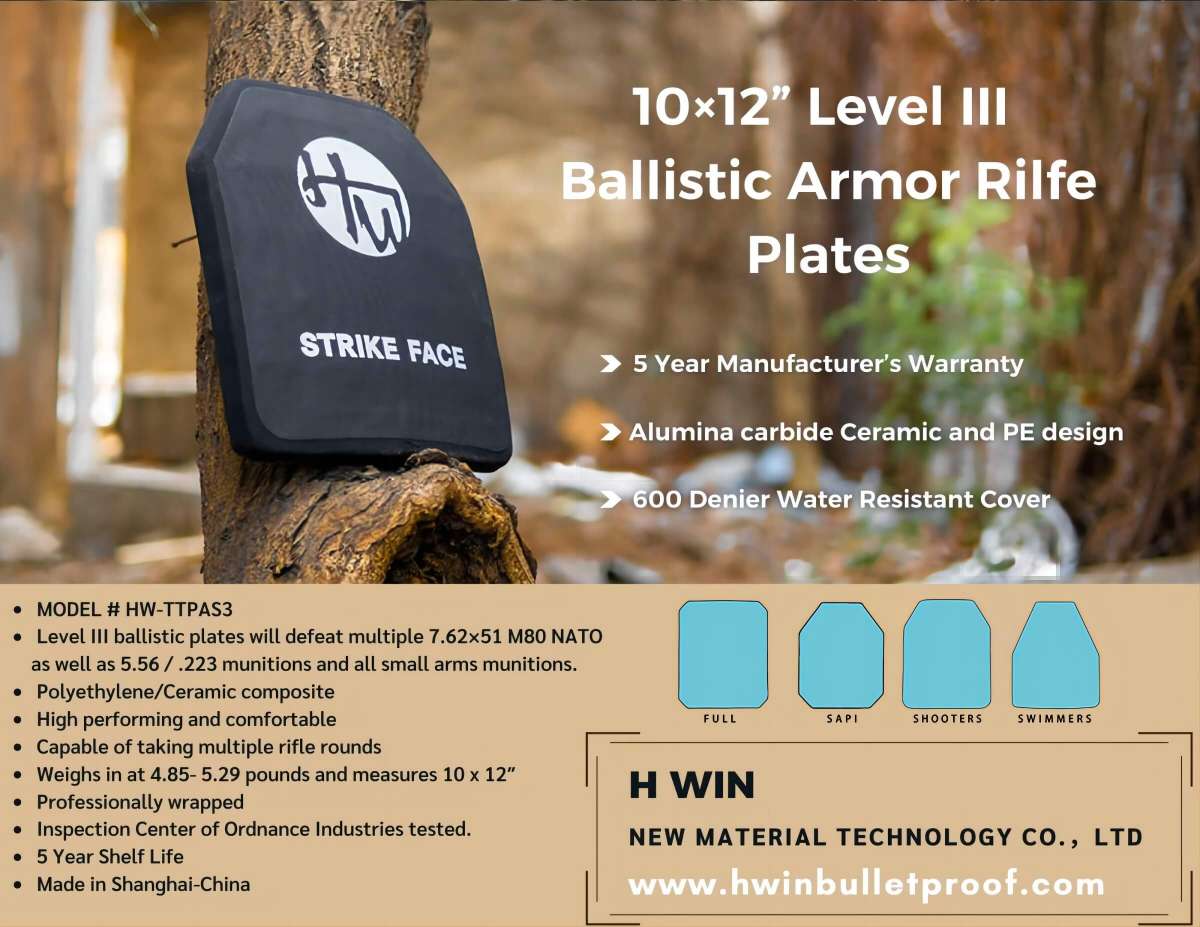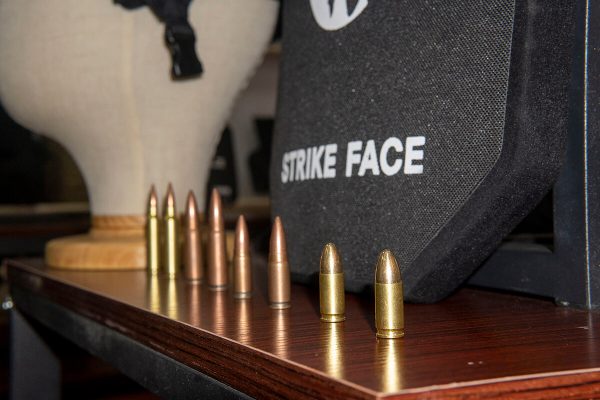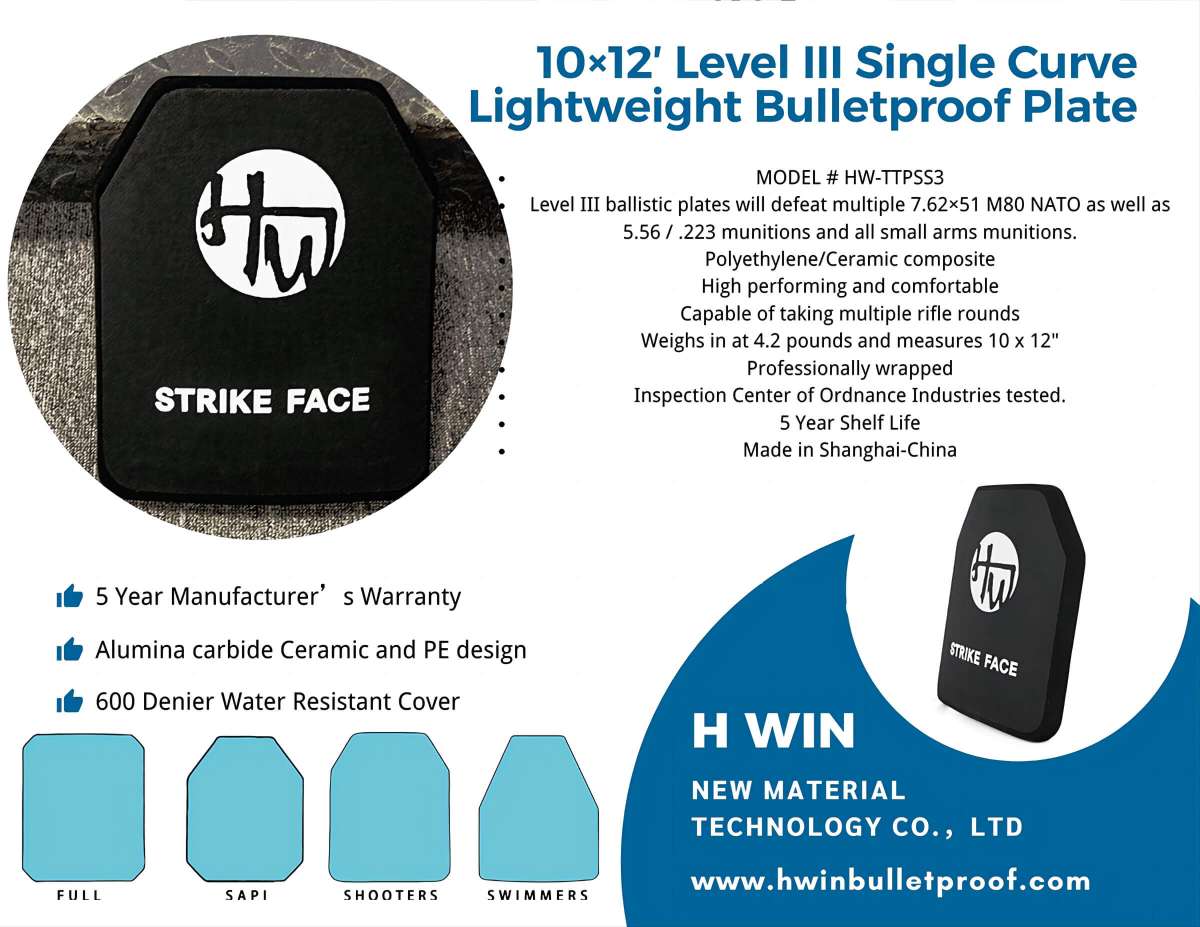When it comes to selecting the right ballistic plates for personal protection, understanding the differences between Level III, III+, and IV plates is crucial. Each level offers varying degrees of protection against different types of ammunition, so knowing which one best suits your needs can make all the difference.
In this article, we’ll break down the features, advantages, and ideal use cases of each plate type, helping you make an informed decision based on your specific situation and safety requirements. Whether you’re in law enforcement, military, or a civilian looking for added protection, this guide has you covered.

Level III Ballistic Plates
Level III ballistic plates are designed to protect against high-velocity rifle rounds, providing critical defense in environments where heavier threats are present. These plates are specifically rated to stop rounds commonly fired from military-grade rifles, such as the 7.62x51mm NATO full metal jacket (FMJ) rounds, typically used in weapons like the AR-10. Level III plates are a solid choice for those in military, law enforcement, or other high-risk roles requiring enhanced protection against rifle fire.
Main Features:
- Rated for 7.62x51mm NATO FMJ: Protection against one of the most commonly used military rifle rounds.
- Designed for High-Velocity Bullets: Effectively stops rounds traveling at high speeds, typically fired from rifles.
- Tactical Use: Ideal for professionals facing rifle fire in tactical environments such as military or law enforcement operations.
- Multi-shot Protection: Rated to withstand up to six shots from the specified 7.62x51mm ammunition.
- Durable Construction: Made from materials like polyethylene, ceramic, or composite fibers, engineered to absorb and disperse impact energy.
- Weight Consideration: Heavier than soft armor plates, but offers much higher protection against rifle fire.
- NIJ Standard Compliance: Meets the National Institute of Justice (NIJ) 0101.06 standards for ballistic plate performance.
Level III+ Ballistic Plates
Level III+ ballistic plates are a step up from standard Level III armor, designed to offer increased protection against threats that typical Level III plates cannot handle. The “plus” designation indicates that these plates have undergone additional testing beyond the standard NIJ 0101.06 to stop a broader range of ammunition. Ideal for those facing varied threats, Level III+ provides enhanced defense without the added cost and weight of Level IV plates.
Main Features:
- Protection Against Non-Standard Threats: Tested to stop ammunition that Level III plates cannot handle, such as certain armor-piercing or higher-velocity rounds.
- Enhanced Testing Standards: The “plus” means that the manufacturer has conducted additional ballistic tests to ensure superior protection beyond the standard NIJ guidelines.
- Common Threats Blocked:
- 5.56×45 M855 “green tip” or “penetrator” rounds
- .30-06 JSP
- AK47 armor-piercing rounds
- 7.62×39mm PS ball
- 7.62×51 M80 NATO Ball (at velocities higher than 2,780 feet per second)
- Other high-velocity or specialty ammunition
- Does Not Replace Level IV Armor: Level III+ offers extra protection over Level III, but it is still not designed to stop armor-piercing rifle rounds or threats meant for Level IV plates.
- Lightweight Yet Stronger: Strikes a balance between the weight of Level III armor and the added protection, making it ideal for situations that require flexibility and mobility.
- Not a Standard for All Manufacturers: Since Level III+ is a manufacturer-specific designation, performance can vary slightly. Always verify the specific ratings from the brand to ensure consistency.

Level IV Ballistic Plates
Level IV ballistic plates provide the highest level of protection available under the NIJ standards for personal armor. These plates are specifically designed to stop a single shot from a 7.62mm Armor-Piercing (AP) “Black Tip” round, which is one of the most lethal types of ammunition, comparable to a .30-06 AP bullet.
While Level IV offers exceptional defense, it’s important to remember that it is tested for only one shot, unlike Level III plates, which are rated for multiple hits. Level IV plates are ideal for high-risk situations where extreme threats are present, but the increased weight and bulk might not always be necessary.
Main Features:
- Top-Level Protection: Specifically designed to stop a single shot from a 7.62mm AP “Black Tip” round, offering defense against some of the most dangerous rifle rounds.
- Highest Rifle Armor Rating: Provides the highest level of protection under the NIJ body armor standards.
- One-Shot Protection: Unlike Level III, which is tested for multiple shots, Level IV plates are rated for only one shot from powerful armor-piercing ammunition.
- Ideal for Extreme Threats: Best suited for environments with a high risk of encountering armor-piercing rounds, such as military combat or specialized law enforcement operations.
- Heavier and Bulkier: The superior protection comes at the cost of added weight and bulk, which may limit mobility compared to Level III or III+ plates.
- Not Always the Best Option: While Level IV offers maximum protection, it may not be necessary for every scenario, and its weight could impede mobility depending on your specific needs.
Level III, Level III+, And Level IV: Which Ballistic Plates Should You Choose?
When choosing between Level III, Level III+, and Level IV ballistic plates, it’s important to consider the threats you might face, your need for mobility, and the environment you’re in. Each level offers a distinct advantage based on the severity of the risks involved. Here’s a guide to help you decide:
Choose Level III if…
- You’re primarily facing traditional rifle rounds like the 7.62x51mm NATO FMJ, commonly used in military and law enforcement settings.
- You need a balance of protection and mobility, as Level III plates are lighter than their higher-rated counterparts.
- You’re in a situation where high-velocity threats are a concern, but armor-piercing or extreme velocity rounds are unlikely.
- You prefer more affordable options without sacrificing necessary protection for standard tactical roles.
Choose Level III+ if…
- You anticipate facing more advanced or non-standard threats that Level III plates can’t handle, such as armor-piercing rounds or higher-velocity ammunition like 5.56×45 M855 or AK47 AP rounds.
- You want added protection without going all the way to Level IV, striking a balance between defense and weight.
- You’re in a tactical environment with varied threats, where flexibility and additional protection are crucial.
- You are looking for a solution that can handle a wider range of ammunition, but you don’t need the extreme protection of Level IV plates.

Choose Level IV if…
- You’re dealing with the highest-risk situations, where the threat of armor-piercing rounds (such as the 7.62mm AP “Black Tip” round) is very likely.
- You need the highest level of protection against lethal, high-velocity, and armor-piercing rounds, typically in military combat or high-stakes law enforcement operations.
- You’re prepared to sacrifice some mobility and accept the added weight and bulk for maximum protection.
- The primary goal is to stop a single, highly dangerous shot from an AP round, where no other level of protection will suffice.
Conclusion
Choosing the right ballistic plates depends on the threats you face and your need for mobility. Level III offers reliable protection against standard rifle rounds, while Level III+ enhances defense against higher-velocity or armor-piercing ammunition. Level IV provides the highest protection for extreme threats but comes with added weight. Consider your specific needs to make an informed decision and ensure you’re equipped for the situation at hand.
